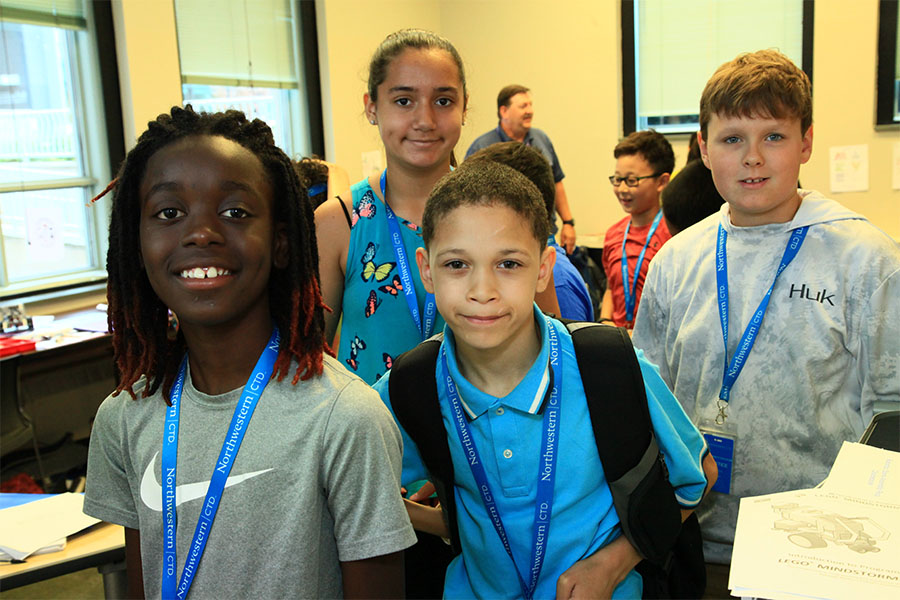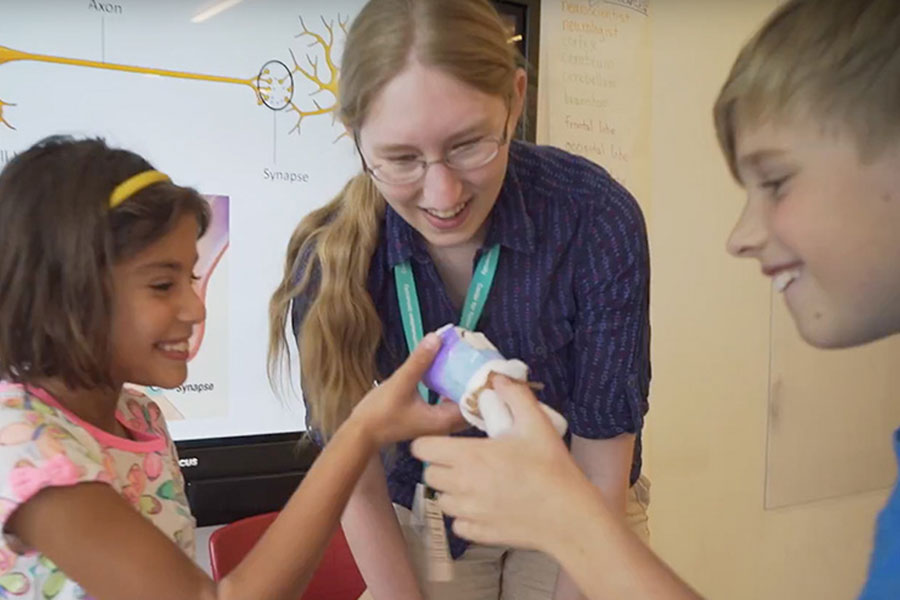Rainy Day Activity: Exploring Typography
- A large paper surface, like newsprint, 18x24” drawing pad, rolls of white drawing paper, butcher paper, or newspaper. You want a surface where the child can iterate and practice and try again easily.
- Square brushes (Foam brushes from the hardware store of any size work great for this!)
- Watercolor, acrylic or tempera, diluted to a runny consistency like drawing ink in an open jar.
- Paper towel for blotting the brush.
 2. Connect the anchors with the verticals:
2. Connect the anchors with the verticals:  3. Make a fully-formed letter:
3. Make a fully-formed letter:

Getting fancy with an "a".
After years of teaching this kind of material, I believe that developing the product that the student begins can be a productive path, rather than re-directing them towards a specific end. This can be informative for parent, teacher and student because the student starts to evolve a new vocabulary for themselves and the exercise at hand. In the case of lettering and type, the awareness is kinesthetic ; holding the brush with lightness and intention, and paying attention to angles and shapes being made. The product is less important than the awareness of the intent and complexity of lettering and typographic design. The Modern Period
Futura used on the placard left on the moon in 1969 by American Astronauts.
Modernist typefaces like Futura or Helvetica reflected their designers’ desire to create a typeface that was spare and only contained essential elements, with a more mechanistic purity of form. This can be duplicated by using the square brush to produce letterforms that are uniform in their width all the way around. At this point, your child will want to write their names and interesting words with their brush in their preferred form. Suggest words with letters that are interesting to try to figure out, like K or Q. Encourage them to continue developing their own alphabet. Consider directing them to graph paper and using the idea of an underlying grid to build their alphabet. Or, check out a book or class on Calligraphy, or look at graffiti artists and their connection to all of these letterform traditions!
Modifications for Younger or Older Students: For your younger child, after playing with the brush and the letterforms a bit, go into Microsoft Word and experiment with the following typefaces: What does my name look like in: Lucida Blackletter? Matura? Futura? Let them browse and find their favorite typefaces. For older and younger children, look at illuminated letters and initial caps and suggest they illuminate their initial. Older students can be typography detectives. Sometimes designers tell you in the front matter of a book what typeface they used: can you identify it that way? Or can you go into Word and figure out what typeface was used in your favorite book through comparison? Alternatively, find a favorite typeface and Google its name to find out its history. You can also research interesting typographers like: Giambattista Bodoni, Hermann Zapf, and Tobias Frere-Jones.
Additional Resources and Links: http://ilovetypography.com/2007/11/06/type-terminology-humanist-2/
http://ilovetypography.com/2010/08/07/where-does-the-alphabet-come-from/ http://www.bemboszoo.com/
Dover has an interesting series of books on lettering.
Trivia Question answer: Steve Jobs! Watch his inspirational graduation speech at Stanford in 2005 to hear the story.
Anne Stevens is a visual artist with an MA in Visual Studies from UC Berkeley. She has developed the Creative Studies program exclusively for the Center for Talent Development’s Saturday Enrichment Program, as well as an online curriculum for CTD's Gifted LearningLinks Program. Click here to enroll in one of her upcoming courses for grades 2-6. Registration closes September 17!
At this point, your child will want to write their names and interesting words with their brush in their preferred form. Suggest words with letters that are interesting to try to figure out, like K or Q. Encourage them to continue developing their own alphabet. Consider directing them to graph paper and using the idea of an underlying grid to build their alphabet. Or, check out a book or class on Calligraphy, or look at graffiti artists and their connection to all of these letterform traditions!
Modifications for Younger or Older Students: For your younger child, after playing with the brush and the letterforms a bit, go into Microsoft Word and experiment with the following typefaces: What does my name look like in: Lucida Blackletter? Matura? Futura? Let them browse and find their favorite typefaces. For older and younger children, look at illuminated letters and initial caps and suggest they illuminate their initial. Older students can be typography detectives. Sometimes designers tell you in the front matter of a book what typeface they used: can you identify it that way? Or can you go into Word and figure out what typeface was used in your favorite book through comparison? Alternatively, find a favorite typeface and Google its name to find out its history. You can also research interesting typographers like: Giambattista Bodoni, Hermann Zapf, and Tobias Frere-Jones.
Additional Resources and Links: http://ilovetypography.com/2007/11/06/type-terminology-humanist-2/
http://ilovetypography.com/2010/08/07/where-does-the-alphabet-come-from/ http://www.bemboszoo.com/
Dover has an interesting series of books on lettering.
Trivia Question answer: Steve Jobs! Watch his inspirational graduation speech at Stanford in 2005 to hear the story.
Anne Stevens is a visual artist with an MA in Visual Studies from UC Berkeley. She has developed the Creative Studies program exclusively for the Center for Talent Development’s Saturday Enrichment Program, as well as an online curriculum for CTD's Gifted LearningLinks Program. Click here to enroll in one of her upcoming courses for grades 2-6. Registration closes September 17!

